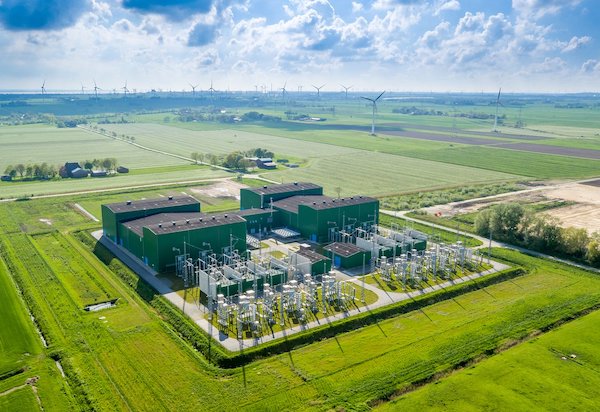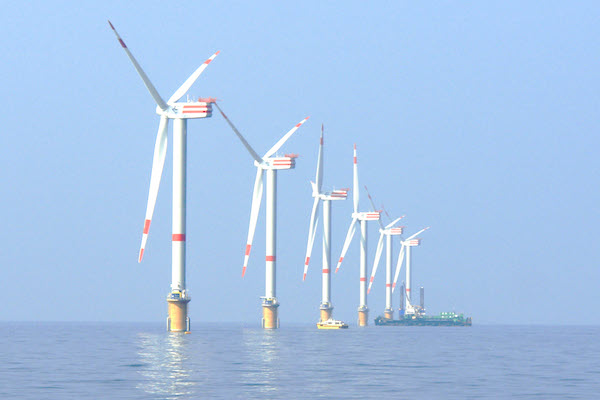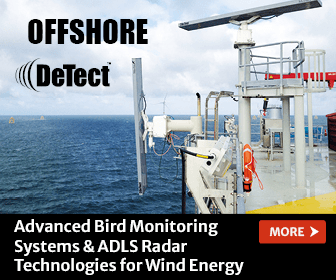A Call for Offshore Wind: Investments needed in key technologies
Despite some initial setbacks, the U.S. is making significant progress in meeting its climate goals outlined in the Paris Agreement. As it stands, the administration is committed to reducing greenhouse gas emissions to 50 percent below 2005 levels by 2030, decarbonize the U.S. power sector by 2035, and achieve a net-zero emissions economy by 2050. However, while a $369 billion investment made through the Inflation Reduction Act (IRA) offers some opportunity for optimism, there is still work to be done.
To meet these aggressive climate goals, renewable energy production will need to be ramped up and diversified beyond solar and onshore wind to include a mix of other sources. With its steady and more reliable generation profile, and the prospect of building large plants off the coast with minimal disruption to onshore communities, offshore wind provides an attractive option. According to the Biden administration, the U.S. government is targeting the deployment of 30 gigawatts of offshore wind energy by 2030 – a huge increase from today’s less than 1 gigawatt of capacity. Offshore wind is much more mature in Europe, and the U.S. market can learn a lot about how Europe has led the way developing reliable offshore wind capacity to decarbonize its electrical grids and meet its own climate goals.

Fortunately, the IRA has given the industry a once-in-a-lifetime opportunity to unlock the untapped potential of offshore wind in the U.S. While the industry has recently experienced some headwinds, typically resulting from inflationary pressures and supply chain challenges, the ongoing financial incentives for renewable energy generation alongside performance gains have helped to maintain a solid value proposition for offshore wind, which will likely be upheld in the coming years. To date, there has been meaningful progress in the development of big offshore wind projects along the East Coast, and there is serious consideration of opportunities to develop windfarms in the deeper waters of the Pacific, mainly using floating technology.
In light of these developments, Energy Innovation models forecast that as many as 1.3 million clean energy jobs will be created nationally by 2030. This provides a promising outlook for the country to meet its ambitious objectives, but importantly the industry must tackle technical issues that prevent many of the more ambitious projects from getting off the ground. More than financial investment will be required. Harnessing a more intelligent approach through data driven insights will yield better planning, execution, and operability for these large, multi-gigawatt offshore wind farms.
Tackling the technical challenges of offshore wind
Offshore wind projects face many financial, community, supply chain, and regulatory roadblocks, but given the right attention and focus, it’s clear that there is significant political will and public interest in addressing these obstacles.

First, offshore wind energy – by its very nature – is typically generated dozens or even hundreds of miles from load centers. Just transmitting capacity to shore without substantial losses will be an extensive undertaking. Secondly, there aren’t many places where huge amounts of capacity can be integrated directly into the grid. Offshore wind farms have the potential to generate multiple gigawatts; simply depositing that amount of capacity directly into the grid would likely cause congestion – especially if there are not sufficient efforts to modernize and expand the grid infrastructure around those points of integration. And thirdly, as with most renewables, offshore wind generation is prone (albeit lesser than onshore renewables) to fluctuations depending on weather conditions, requiring the grid to be more flexible than ever.
Three available technologies ready to solve these challenges
Solving these technical challenges will rely on the industry’s ability to modernize the electrical grid through digital transformation initiatives. Here are three technologies that can help solve these problems and unlock the potential of offshore wind:
- High-Voltage Direct Current (HVDC) Solutions HVDC electric power transmission systems can transmit significantly more electricity in a less costly manner across long distances than alternating current (AC) lines. And while HVDC transmission would require converting AC power to DC at the offshore platform and then back to AC at the onshore substation, the benefits greatly outweigh the additional costs of building and operating the converter facilities. Apart from the benefits onshore in transmitting bulk power over long distances, HVDC also has additional benefits in context of offshore-to-onshore power transmission. This includes cost savings from needing only two subsea cables versus three, and the ability to improve resiliency of the onshore AC grid through dynamic control of voltage and frequency.
- Asset Performance Management (APM) Offshore wind assets are notoriously hard to maintain for obvious logistical reasons, and any unplanned downtime due to failures take much longer and more cost to resolve. In the era of high interest rate for capital, it is important to optimize the lifetime cost of assets to maximize the returns on investment (ROI). Automated APM solutions can help operators better maintain equipment, predict potential outages, and optimize productivity. They also enable a more holistic risk management for the overall project – helping make better decisions that improve operations, lower costs, and maximize revenue.
- Energy Storage Systems Storage solutions can help smooth out the natural ebb and flow of renewable energy generation – eliminating the need to waste capacity during times of peak generation and offering the ability to help meet peak demand even when generation is low. However, given the high capacity of offshore wind farms, additional methods for long-term storage should be investigated as well – such as compressed air, superconductive magnets, and hydrogen storage. Perhaps most importantly, we need to expand transmission infrastructure to make sure energy can be transferred when and where it is needed.
Investment is needed
Meeting the country’s climate goals will require the expansion and diversification of renewable energy generation. The vast potential of offshore wind generation can provide a substantial, fairly stable energy source. However, technical and policy challenges will need to be resolved in order for the country to take full advantage of the potential of offshore wind power. We need to continue to invest in transmission capacity, particularly HVDC systems which can transmit power over long distances, both from offshore platforms to shore, and between different regions. We’ll need solutions such as asset performance management to optimize output and create operational efficiencies. Moreover, we’ll need to develop more ways to store energy to help smooth out the variable generation profile of renewables such as offshore wind. With these challenges addressed, offshore wind could go a long way in decarbonizing our electrical grid and helping combat climate change.
Debrup Das is Head of Renewables, North America, at Hitachi Energy. Debrup is a visionary innovator, leader and an expert in T&D systems, solid-state breakers, and transmission power flow control.
Hitachi Energy | www.hitachienergy.com
Author: Debrup Das
Volume: 2024 January/February




.jpg?r=6322)






.jpg?r=9591)
